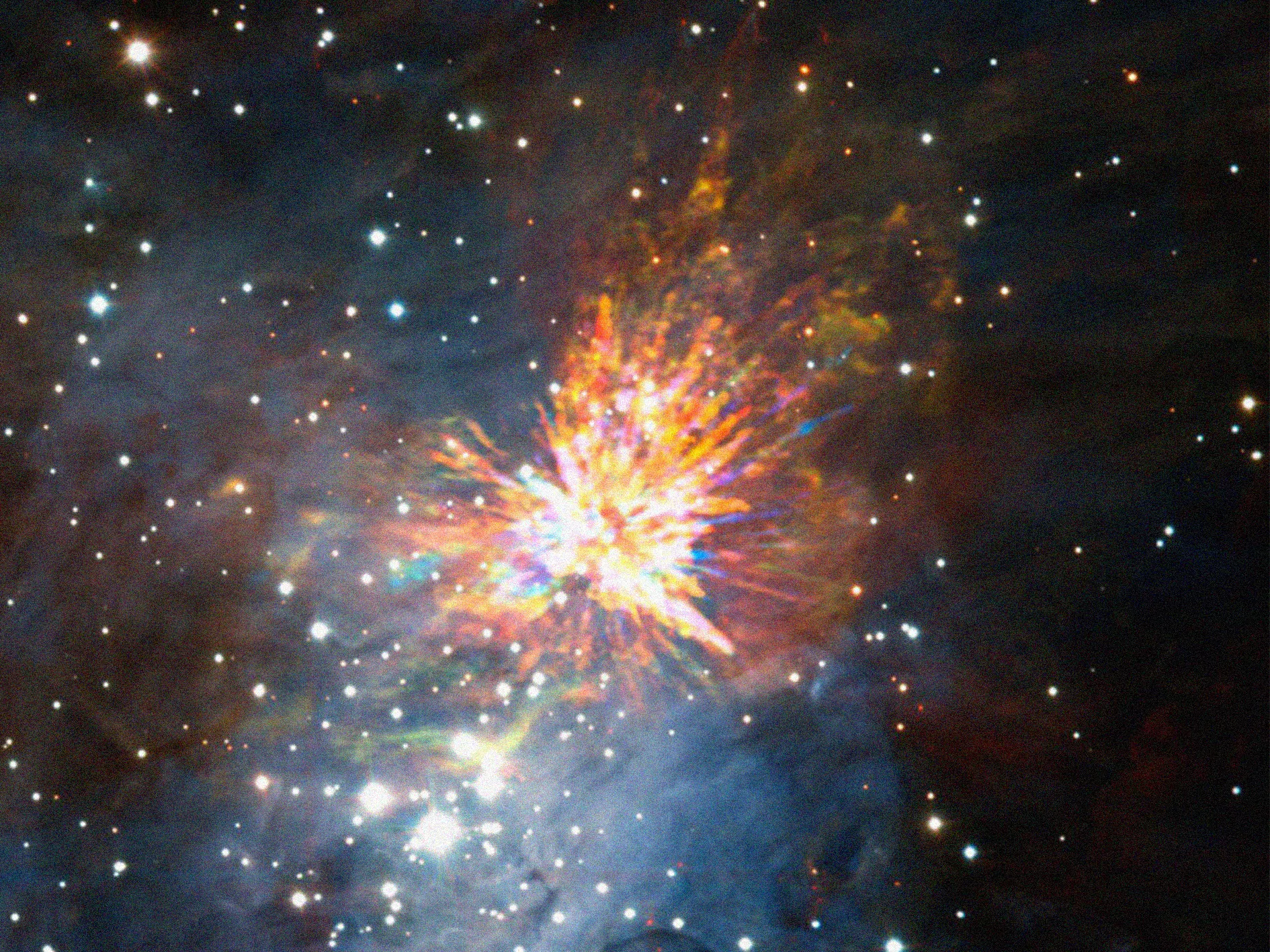The explosion gave rise to a powerful cosmic «firework», the energy of which would be enough for the Sun to shine for 10 million years. At the same time, the gas of the former nebula moves at a speed of 150 kilometers per second away from the epicenter of the explosion, which is approximately equal to the speed at which the Sun rotates around the center of the Galaxy.
The stars survived this collision and are now flying away at a speed of about 13 and 29 kilometers per second.
